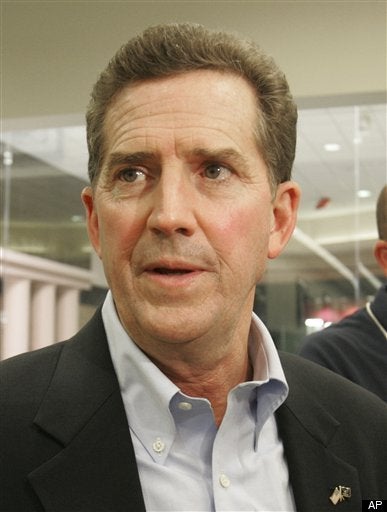
With all the attention being paid to the intelligence failures that allowed Umar Farouk Abdul Mutallab to board Northwest Airlines Flight 263 with explosives packed into his briefs, it is my hope that the experiences of what happened to the passengers after the plane landed be examined for what seem to be lapses in security and basic crime scene investigation.
Listening to the stories of several passengers, its clear in the first few hours after the removal of Mr. Mutallab from the airplane, some basic safety precautions were not taken. I may have some understanding of why, which I'll get to shortly. But first, a brief recap.
After the plane was on the ground, uniformed officers boarded and removed Mr. Mutallab and two others who were injured in the tussle to extinguish the fire. Twenty-five to 45-minutes later the passengers were allowed to take their carry-on luggage and leave the plane. They were taken, as a group, directly into the airport baggage claim area, which was empty except for a contingent of uniformed police officers.
Passengers waited for some time -- their accounts differ but for perhaps up to an hour -- until plainclothes law enforcement officers arrived with K9 "sniffer" dogs. One of the dogs reacted to a passenger who was handcuffed and led away. The rest of the passengers were hurriedly moved to an area deemed "more secure."
For the next 4-5 hours passengers were interviewed by the plainclothes authorities and allowed to collect their baggage and leave the airport.
Security experts with whom I have spoken expressed alarm about this story for several reasons, which I'll list point by point below. You can read their specific comments in my earlier blog on this subject.
- By leaving the passengers on the airplane they remained at risk if unknown or undetected accomplices had still been in the aircraft
- By failing to immediately separate the passengers from the carry on luggage, the passengers were at risk from an undetected explosive or other dangerous device
- By allowing the passengers to leave the airplane with their carry on luggage, potential crime scene evidence was removed and undetected explosives or other dangerous devices could have been removed from the aircraft
- By waiting for more than 45 minutes to bring K9 dogs into the area where the passengers were being held, any undetected dangerous device in that luggage could have harmed the passengers and others in the airport including the large complement of law enforcement personnel in the holding area
- By failing to have the passengers place their carry on luggage in a central area in the holding center, some luggage may have been missed by the K9 detection dogs
- By allowing the passengers to leave the airport without physically searching their luggage, undetected devices or other evidence may have been carried out of the airport
I've put these points to the Department of Homeland Security and was told that the Federal Bureau of Investigation was in command of the response and that my questions need to be directed there. Stay tuned. In the meantime, I've since learned a few more details about what happened on the flight which leads me to a few tentative conclusions about the law enforcement reaction.
The pilots in command of flight 253 did not know the full scope of what was going on in the cabin because it happened so late in the flight. The pilots were already on short final approach to Detroit airport when the pilot communicating with the ground reported that he heard what sounded like firecrackers going off. Since he did not request assistance, the aircraft was directed to the gate. It was only after the plane was on the ground that anyone at the airport knew there was trouble onboard.
Knowing now that the information about what Mr. Mutallab had done was so late-breaking, it does seem to explain why the reaction of law enforcement was so laid back.
Why did first responders hustle Mr. Mutallab and his subduers off the plane leaving the rest of the cabin uninspected? Probably because they had no idea that they were responding to an attempted terrorist attack. Why were passengers allowed to remove their things and loll around the airport with little concern about what their involvement might have been or what they might have been carrying? Probably for the same reason.
But at some point, more critical thinking should have come into play. I need remind no one that more than eight years have passed since the terror attacks of 9-11. In addition to finding out what's failing in our nation's information and intelligence gathering operations, the experience of Flight 253 should be used to find out whether there are gaps in the way law enforcement handles terror events, even if on first blush, they seem to be something less.
